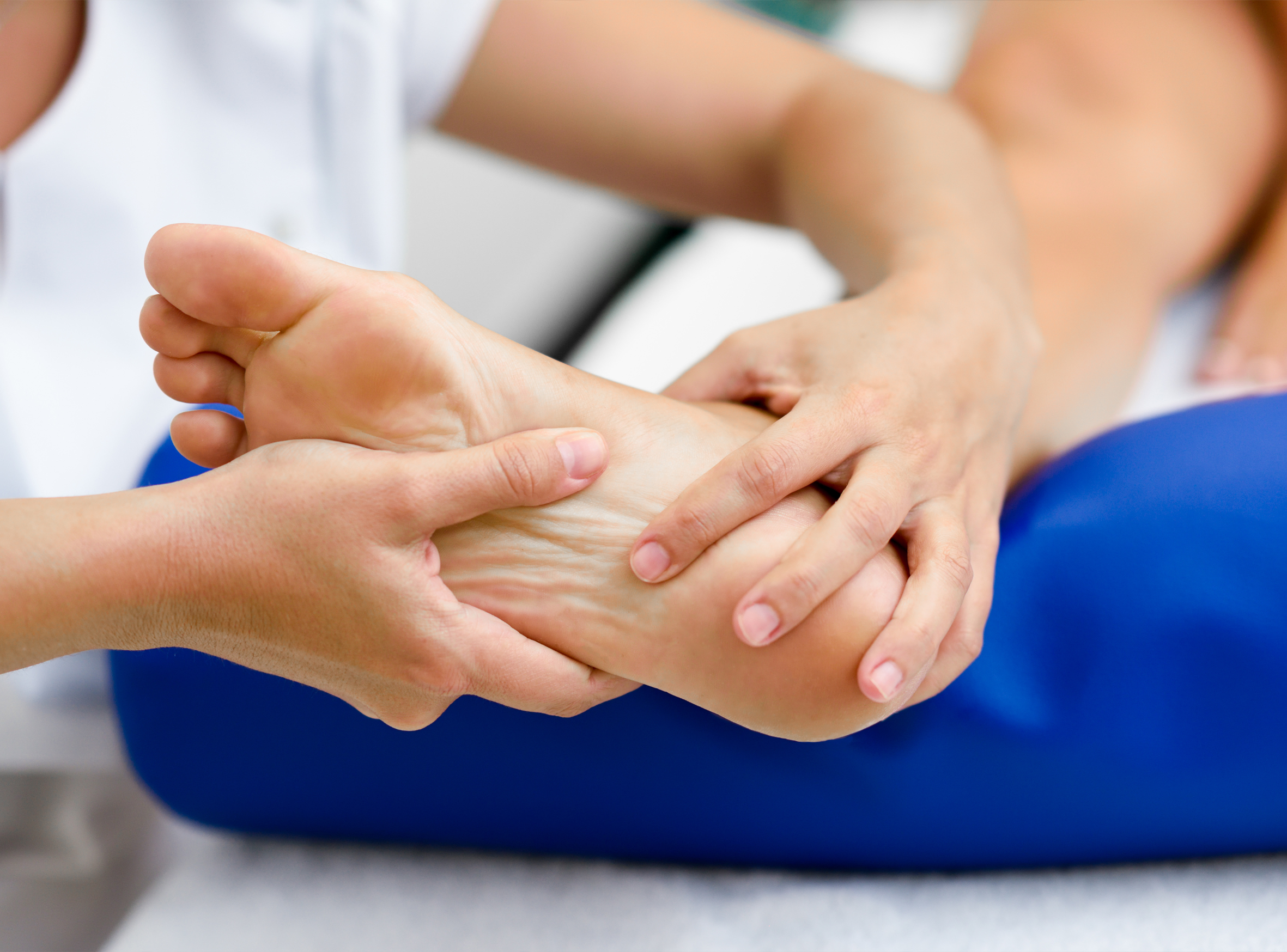An average person walks 128,000 kms in a lifetime. Most of us take those two complex appendages at the end of our legs for granted, expecting them to carry us all the way, happily and comfortably.
The human foot has 26 bones, 33 joints and over 100 tendons, muscles and ligaments. With so many working parts, this intricate and highly developed structure needs preventive care to carry our weight throughout life with stability and balance.
Our podiatrists in Adelaide, Stirling and Mount Barker, are tertiary qualified with years of study focused only on this single area of the body, which includes the foot, ankle and lower leg. Many people will only visit podiatrists once the pain in their feet has become a problem, and many of these problems may have been avoided with preventive treatment.
Untreated foot problems make you feel weary, sore and uncomfortable in general. You may find yourself avoiding physical activities that exacerbate the problem, perhaps without even realising it. Or you may think you won’t be able to return to activities such as sports or hiking because of foot pain.
However many foot problems can be fixed with the help of a podiatrist. Read on about the benefits of regular podiatry and why it makes good long term sense to get regular podiatry treatments.
The benefits of regular podiatry
Regular podiatry relieves pain and treats infections
Our podiatrists effectively treat many foot conditions from simple to complex. Problems such as skin lesions, fungal infections and nail problems are all treatable conditions as well as mechanical problems such as bone and structural formations, or circulation issues and ulcerations that occur from diabetes.
Foot pain is not normal after a long day of activity, as many people think. Your foot muscles may feel tired, that’s normal after a big day out. However, if your feet hurt or ache regularly then they need an assessment, as foot pain may indicate an imbalance or structural problem.
Regular podiatry helps to identify possible health conditions
Your feet are mirrors of your overall health. Foot problems will often be an indication of other conditions potentially lurking that need to be identified and treated. For example – dry skin, brittle nails, infected or discoloured nails, burning and tingling sensations in your feet, cold or numb feet, should all be diagnosed for the root cause.
Regular podiatry supports good long term foot health
Preventive healthcare applies to your feet just like all other parts of your body. Our podiatrists conduct a series of tests and perform a gait analysis to recommend treatment, orthotics, structural support or changes to your footwear. Our advice is tailored to your walking or running style and the shape of your feet, supporting the long term health and strength of your feet.
Regular podiatry will help you make healthier long-lasting lifestyle changes
We will help you understand how your lifestyle affects your feet and recommend changes for long term benefits. Regardless of your age and activity level, we advise on:
- Footwear ideally suited to the shape of your feet
- Diet and nutrition to help with conditions that effect your feet
- Hygiene practise to ensure your nails and foot bed stay healthy
Symptoms – when do you need to see a podiatrist?
Here are some common symptoms that indicate you may need a podiatrist:
- Painful feet – arches, heel or forefoot pain
- Pain in your legs, knees, hips or lower back
- Numbness or altered sensation
- Corns and calluses are developing
- Toenails are becoming thickened or mis-shaped
- If you are finding walking or standing uncomfortable
- Leg or foot pain during sport
Sanders podiatry in Adelaide, Mt Barker and Stirling are here to help you with the following foot conditions
Sanders Podiatry is a family owned podiatry practice in three locations around Adelaide – Linden Park, Mt Barker and Stirling. Our experienced podiatry team offer gentle, effective and personalised treatments and preventive maintenance plans for the following conditions:
- General foot care
- Diabetes Management
- Children’s Feet
- Sports injuries and prevention
- Biomechanical therapy
- Falls prevention
